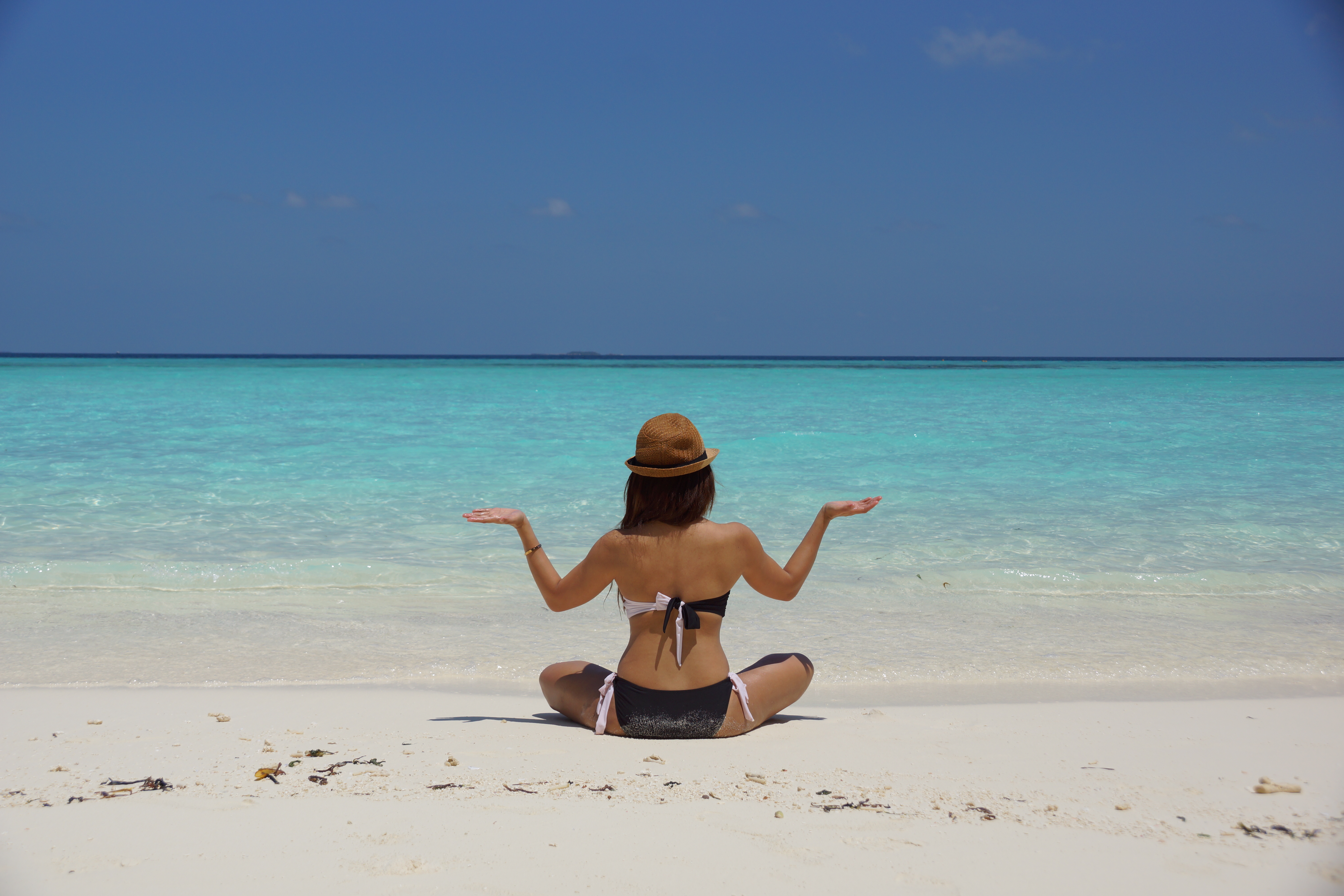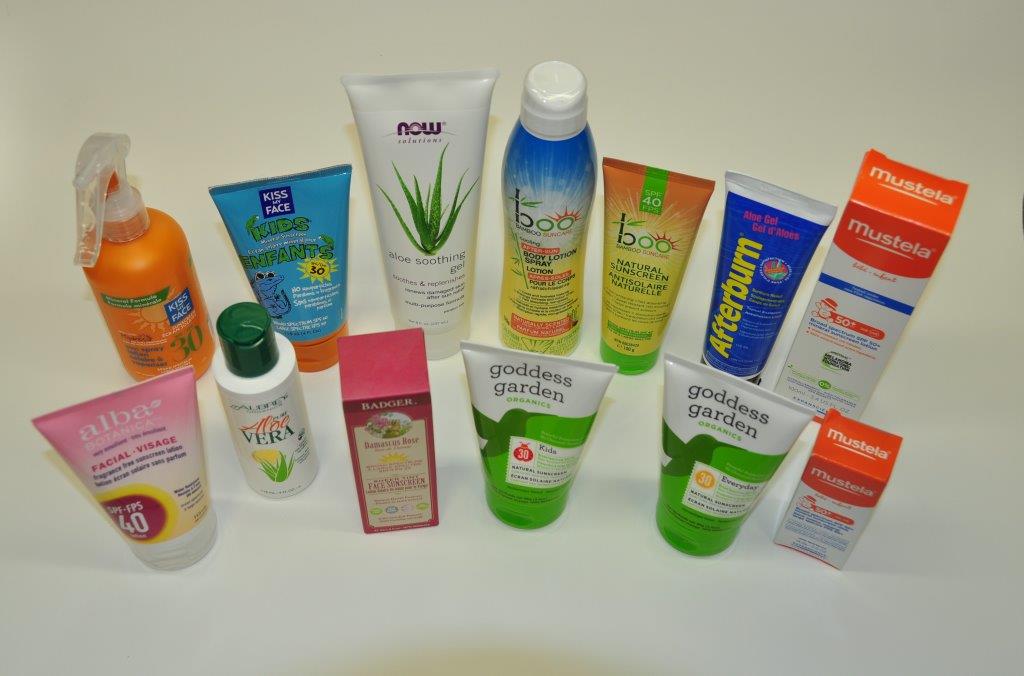
Part 2 of Living a Healthy Summer
Get some sun! The sun helps us produce natural Vitamin D, as well as other healthful benefits, and just makes us feel good, but it has harmful effects, as well.
In the last blog, we mentioned some ideas to help you live a healthy summer. The sun wasn’t mentioned because it deserves and requires a blog of its own.
There is so much controversial information regarding the sun’s benefits and harmful effects, it’s difficult to decide what to do.
Let’s start with some basics. Sunlight comes to us in the form of different sized wavelengths. The ones of concern are UVA and UVB. UVA rays are the ones that cause sun damage and cancer. UVB rays are the ones that cause our bodies to produce Vitamin D, as well as more of a tan. Our bodies can only produce Vitamin D when the sun is in a certain location, at least 50 degrees above the horizon. This is usually in the hottest summer months and the hottest times of the day, not very long in the Maritimes. UVB rays are easily filtered, such as through the clouds, early mornings and late afternoons, and through windows.
This means UVA rays are the main ones coming through on a cloudy day, so do NOT assume you don’t need sunscreen then. You need it more! Also, UVA rays are the only ones that come through windows, so if you are often in a vehicle or office near a window, you ARE being exposed to the bad effects of the sun. SPF or Sun Protection Factor, is the measure of protection from UVB rays, NOT UVA. It is, therefore, VERY important, that you use a sunscreen with BROAD-SPECTRUM protection – this means it will also protect against UVA rays. It also means that anything over an SPF of 30 is just a marketing tool designed to get you to spend more money. Even 15-20 is enough. In Canada, though, it’s difficult to find anything with the lower SPFs, and most are 30, 40, and 50. Don’t be fooled into thinking this means you don’t have to apply as often. To remain protected, you still need to re-apply after swimming, towel-drying, sweating and approximately every 90 minutes regardless.
Selecting wisely when it comes to sunscreens also means choosing certain ingredients and avoiding others. Not only is this of concern for our bodies, but the environment, as well. Many of the toxins found in sunscreens are killing coral reefs and causing other damage to the living organisms in the water and on earth. There are 2 classes of sunscreen active ingredients: Mineral and Chemical. Minerals are safe for your body and the environment.
Minerals are Zinc Oxide and Titanium Oxide. They are nano particles (some will say they are Non Nano, but that's questionable), but not as fine as chemicals. This is good, but it also means they can be hard to spread and get rubbed in thoroughly. Some go on better when your skin is dry, but moisturized. Some need just a little wetness. You may want to try a little olive oil if you have trouble getting it to rub in. Zinc Oxide is a sunblock, so the more that’s in the sunscreen, the higher the SPF. This is what causes that white film on your skin.
Chemicals are generally extra fine nano particles, meaning they can be easily absorbed into the skin, and therefore, bloodstream. This means they are more easily rubbed in. Not all chemicals are awful and the combination of some WITH the minerals may make your sunscreen rub in better, while still giving you the benefits of the minerals. Chemicals to avoid are oxybenzone and octinoxate. There’s also some building evidence about the harmful effects of Retinyl Palmitate, a form of Vitamin A. This is in most of our regular facial moisturizers, especially night creams, but it should NOT be included in your sunscreen, especially those for the face. Health Canada is considering a warning requirement when a product contains this form of Vitamin A. It’s also best to avoid preservatives, such as the Parabens. Good websites for information are https://www.ewg.org/sunscreen/ and http://www.davidsuzuki.org/what-you-can-do/queen-of-green/faqs/toxics/how-to-choose-a-safe-sunscreen/ . There are many others, as well.
One other thing for consideration regarding sunscreen selection. Buy creams, not sprays! Sprays are worse for the environment and for us. We inhale those chemicals, so they get into the lungs, as well as the bloodstream.
If you will be spending long amounts of time in the sun, and want to avoid the over-use of chemicals and other products, COVER UP and SEEK SHADE! Choose sun hats and tightly woven, loose-fitting, long sleeved shirts and pants to keep harmful rays away from skin.
So back to the HEALTHY benefits of the sun. Sun causes our bodies to produce Vitamin D. Adequate levels of Vitamin D provide many health benefits, including simply feeling good! When to get some sun and for how long, to enjoy the healthy benefits, is complicated, but Vitamin D is IMPORTANT! If you have sun sensitivity, burn easily, or can’t get just a small amount of sun each day, be sure to take Vitamin D supplements. If you do burn, or have very dry, scaly, peeling skin, Ford's can help you select an aloe product or other moisturizer; also, ask us about adding green tea extract and/or certain oils to your body lotion. These have antioxidant properties and may help provide a little protection for your skin (very low SPF, not in place of a sunscreen). No matter what, every person is unique, so please ask your pharmacist for advice on what’s right for YOU!
For more details, technical information, references, or questions, please feel free to contact us by completing this form: https://www.fordrx.com/contact or send us an email to This email address is being protected from spambots. You need JavaScript enabled to view it.. And please visit us at Ford's Family Pharmacy and Wellness Centre for a great selection of all natural sunscreens and after sun soothing products. Most of all, ENJOY YOUR SUMMER!






